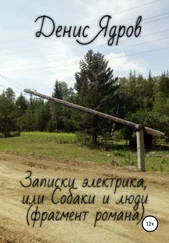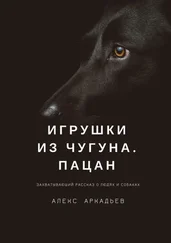R. Coppinger and L. Coppinger, Dogs: A Startling New Understanding of Canine Origin, Behavior, and Evolution (New York: Scribner, 2001).
V. Geist, «When Do Wolves Become Dangerous to Humans?» September 29, 2007, http://www.vargfakta.se/wp-content/uploads/2012/05/Geist-when-do-wolves-become-dangerous-to-humans-pt-l.pdf.
O. Soffer, личная переписка с автором, 15 марта 2013.
L. Marquer, V. Lebretona, T. Otto et al., «Charcoal Scarcity in Epigravettian Settlements with Mammoth Bone Dwellings: The Taphonomic Evidence from Mezhyrich (Ukraine),» Journal of Archaeological Science 39 (2012): 109–120.
См., напр.: S. Leshchinshy and O. Bukharova, «Geochemical Stress of the Krakow-Spadzista Street Mammoth Population Demonstrated by Electron Microscopy,» in The World of Gravettian Hunters, Institute of Systematics and the Evolution of Animals, ed. P. Wojtal (Krakow: Polish Academy of Sciences, 2013), 45–49; S. Leshchinsky, «Lugovskoye: Environment, Taphonomy, and Origin of a Paleofaunal Site,» Archaeology, Ethnology & Anthropology of Eurasia 1, no. 25 (2006): 33–40, doi: 10.1134/S1563011006010026.
N. Bicho, A. Pastoors, and B. Auffermann, eds., Humans Best Friends – Dogs… and Fire! Pleistocene Foragers on the Iberian Peninsula: Their Culture and Environment (Mettmann: Wissenschaftliche Schriften des Neanderthal Museums 7, 2013): 217–242.
V. Ruusila and M. Pesonen, «Interspecific Benefits in Human (Homo sapiens) Hunting: Benefits of a Barking Dog,» Annals of the Zoologica Fennici 41 (2004): 545–549.
J. Koster and K. Tankersley, «Heterogeneity of Hunting Ability and Nutritional Status among Domestic Dogs in Lowland Nicaragua, Hunting Ability,» Proceedings ofthe National Academy of Sciences USA 109 (2012): 463–470, doi: 10.1073/pnas.lll2515109.
K. Lupo, «A Dog Is for Hunting,» in Ethnozooarchaeology, eds. U. Albarella and A. Trentacoste (Oxford: Oxbow Press, 2011), 4–12.
M. Stiner and S. Kuhn, «Paleolithic Diet and the Division of Labor in Mediterranean Eurasia,» in The Evolution of Hominin Diets; Integrating Approaches to the Study of Paleolithic Subsistence, eds. J.-J. Hublin and M. P. Richards (Springer Science and Business Media B. V., 2009): 157–169, p. 161.
C. Arnold, «Possible Evidence of Domestic Dog in a Paleoeskimo Context,» Arctic 32 (1979): 263.
J. Speth, K. Newlander, A. White et al., «Early Paleoindian Big-Game Hunting in North America: Provisioning or Politics?» Quaternary International285 (2013): 121.
C. Turner, «Teeth, Needles, Dogs and Siberia: Bioarchaeological Evidence for the Colonization of the New World,» in The First Americans: The Pleistocene Colonization of the New World, ed. N. Jablonski (San Francisco: California Academy of Sciences, 2002), 123–158.
S. Fiedel, «Man's Best Friend and Mammoth's Worst Enemy? A Speculative Essay on the Role of Dogs in Paleoindian Colonization and Megafaunal Extinction,» World Archaeology 37 (2005): 11–25.
D. Morey and K. Aaris-Sorensen, «Paleoeskimo Dogs of the Eastern Arctic» Arctic 55 (2002): 44–56.
«Hunting a Polar Bear with Dogs,» October 18, 2012, http://retrieverman.net/2012/10/18/hunting-a-polar-bear-with-dogs/; S. Vilhjalmur, The Friendly Arctic: The Story of Five Years in Polar Regions (New York: Macmillan: 1921).
Kuhn and Stiner, «What's a Mother to Do?».
A. Vanak and M. Gompper, «Dogs Canis familiaris as Carnivores: Their Role and Function in Intraguild Competition,» Mammalian Review (2009) 148: 265–283, 281.
Wqjtal et al., «The Scene of Spectacular Feasts,» 135–137.
Данные из работы R. Musil, «Palaeoenvironment at Gravettian Sites Central Europe with Emphasis on Moravia (Czech Republic),» Quartär SI (2010): 95–123.
H. Bocherens, D. Drucker, M. Germonpré et al., «Reconstruction of the Gravettian Food-Web at Predmosti I Using Multi-Isotopic Tracking (13C, 15N, 34S) of Bone Collagen,» Quaternary International, in press.
F. S. Galton, «The First Steps Towards the Domestication of Animals,» Transactions of the Ethnological Society, London (1863) n. s. 1: 122–138; J. Clutton-Brock, A Natural History of Domesticated Animals, 2nd edition (Cambridge: Cambridge University Press, 1999).
A. Sherratt, «The Secondary Exploitation of Animais in the Old World,» World Archaeology, Transhumance and Pastoralism 15, no. 1 (1983): 90–104; A. Sherratt, «Plough and Pastoralism: Aspects of the Secondary Products Revolution,» in Pattern of the Past: Studies in Honour of David Clarke, eds. I. Hodder, G. Isaac, and N. Hammond (Cambridge: Cambridge University Press, 1981): 261–305.
P. Shipman, «And the Last Shall be First,» in Animal Secondary Products: Archaeological Perspectives on Domestic Animal Exploitation in the Neolithic and Bronze Age, ed. H. Greenfield (Oxford: Oxbow Books, 2014), 40–54.
L. Lord, «A Comparison of the Sensory Development of Wolves (Canis lupus lupus) and Dogs (Canis lupus familiaris),» Ethology 119 (2013): 110–120, doi: 10.1111/eth.l2044.
B. Hare and V. Woods, The Genius of Dogs: How Dogs Are than You Think (New York: Dutton, 2013), 76–77.
L. Trut, «Early Canid Domestication: The Farm-Fox Experiment,» American Scientist 87 (1999): 160, doi: 10.1511/1999.2.160; L. Trut, E. Naumenko, and D. Belyaev, «Change in Pituitary-Adrenal Function in Silver Foxes under Selection for Domestication,» Genetika 5 (1972): 35–43 (in Russian, English abstract).
Shipman, The Animal Connection; Shipman, «And the Last.»
J. Bohannon, «Who's (Socially) Smarter: The Dog or the Wolf?» Science Now, May 28, 2013.
P. Smith and C. Litchfield, «How Well Do Dingoes, Canis dingo, Perform on the Detour Task?» Animal Behaviour 80 (2010): 155–162.
Geist, «When Do Wolves Become Dangerous?»
Hare and Woods, Genius of Dogs, 14.
Soffer, Upper Paleolithic of the Central Russian Plain, 258, 187.
Palomares and Caro, «Interspecific Killing.»
Vanak and Gompper, «Dogs Canis familiaris as Carnivores.»
Wojtal et al., «The Scene of Spectacular Feasts.»
G. Haynes, «Utilization and Skeletal Disturbances of North American Prey Carcasses,» Arctic 35 (1982): 266–382.
M. Stiner, «Comparative Ecology and Taphonomy of Spotted Hyenas, Humans, and Wolves in Pleistocene Italy,» Revue de Paléobiologie, Genève 23 (2004): 771–785.
D. Morey, «Burying Key Evidence: The Social Bond between Dogs and People,» Journal of Archaeological Science 33 (2006): 159.
Читать дальше
Конец ознакомительного отрывка
Купить книгу
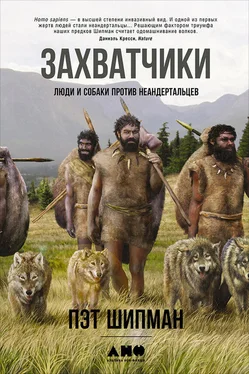
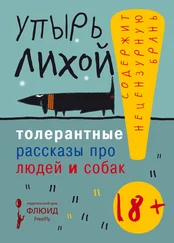
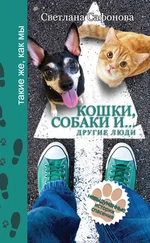



![Марта Стаут - Социопат по соседству [Люди без совести против нас. Как распознать и противостоять] [litres]](/books/389216/marta-staut-sociopat-po-sosedstvu-lyudi-bez-sovest-thumb.webp)


